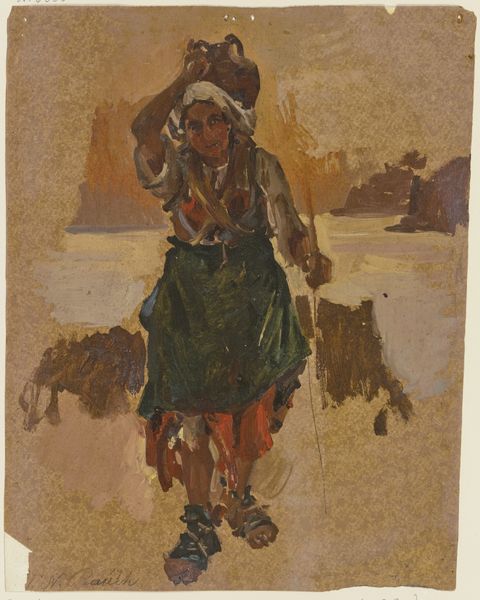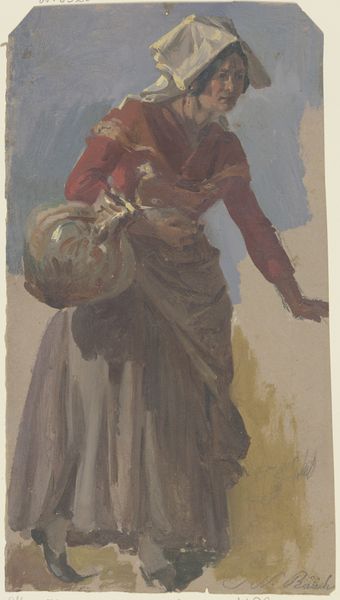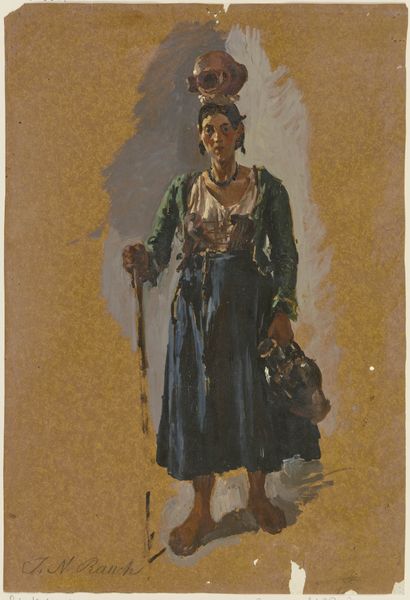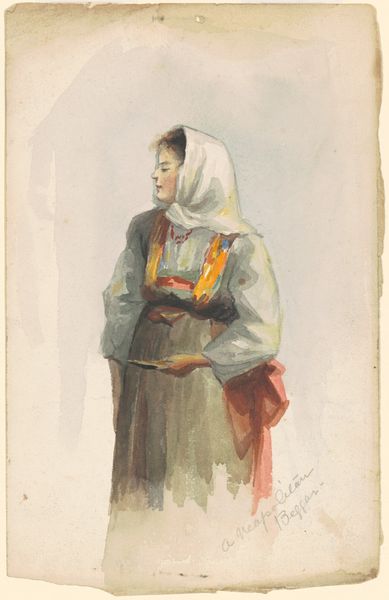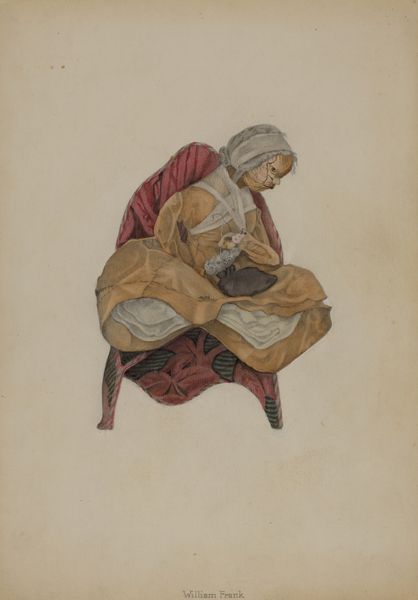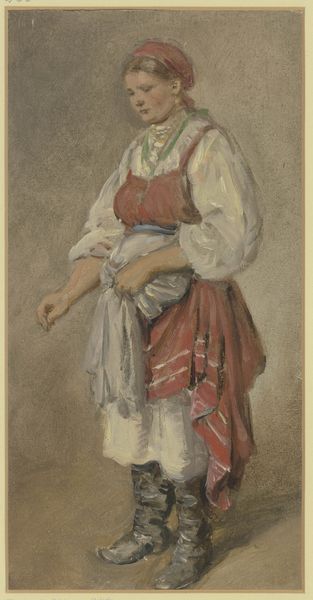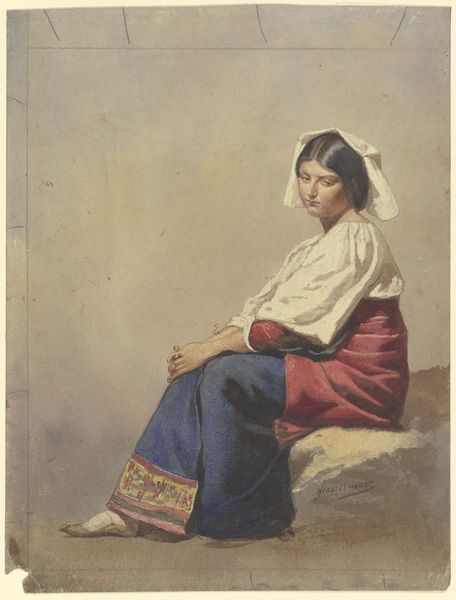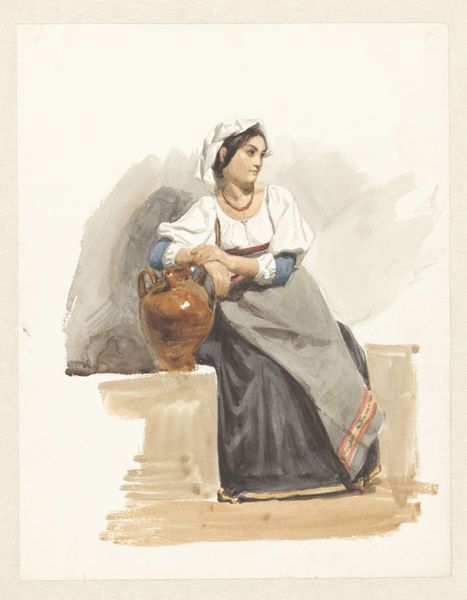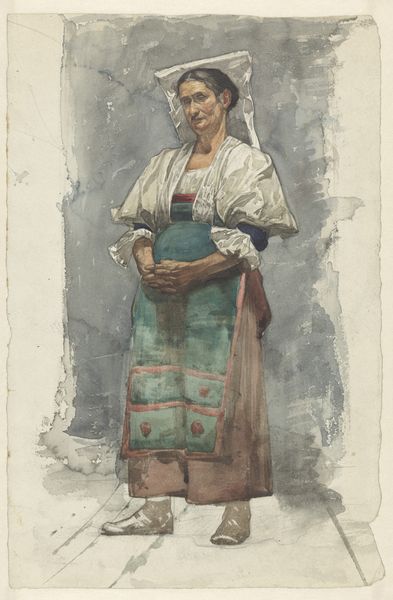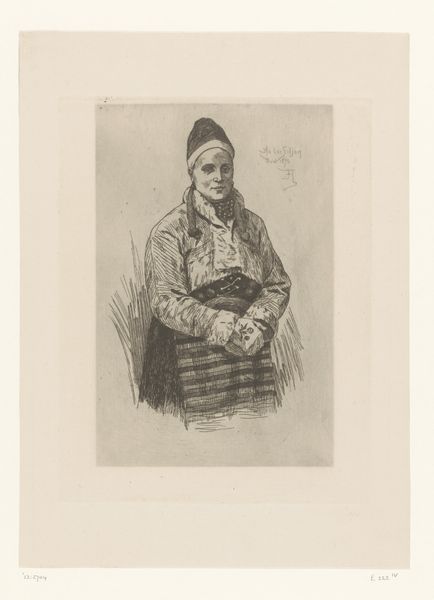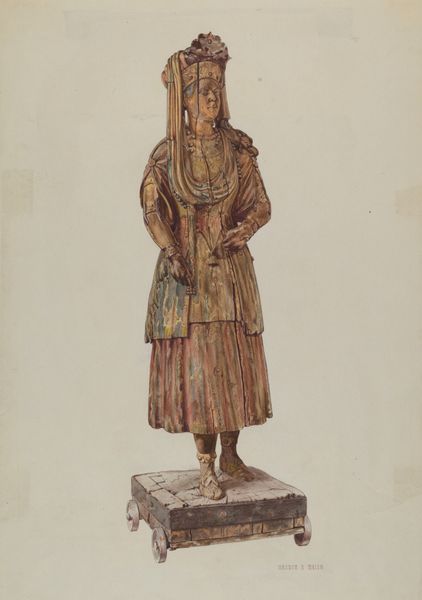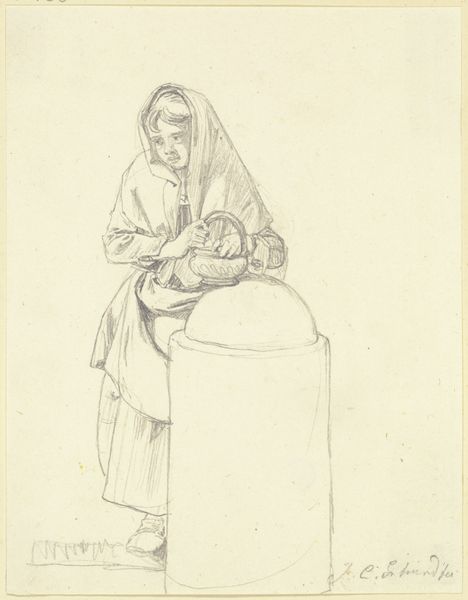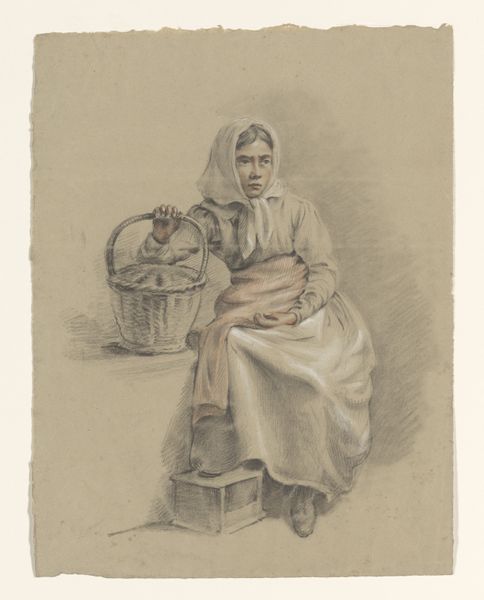
drawing, painting, oil-paint, paper
#
portrait
#
drawing
#
painting
#
oil-paint
#
paper
#
oil painting
#
romanticism
#
portrait drawing
#
portrait art
Copyright: Public Domain
Curator: This is Johann Nepomuk Rauch's "Italienerin mit einem Wickelkind in den Armen", an oil on paper, believed to have been painted sometime between 1841 and 1847. Editor: There’s such tenderness in this work. The way she holds the child so close and that gaze off to the side, there's a feeling of quiet dignity despite… what seems like humble circumstance. Curator: Absolutely. The materials speak volumes about the artistic process and intent. Oil paint applied to paper was often used for studies and preliminary sketches—more accessible and faster than full canvas paintings. Editor: The wrapped child feels so significant. It evokes ancient swaddling rituals. Almost as if the baby is not just physically protected but ritually contained. Do you see any connection to Madonna figures, these protective, maternal poses throughout art history? Curator: Certainly, we can see links in the composition but, equally, note the details of the attire. The textured fabrics and layers suggest the lived reality of labor. There’s real skill and craft in capturing the materiality. These colours were likely expensive pigments at the time! Editor: The choice of colours contributes a lot. The deep burgundies and browns of the woman's clothes give her this grounded connection to the earth. Those aren’t royal colours, these are worker’s hues! It is earthy and natural! It speaks volumes about identity. Curator: I see that. And while this Romantic painting aestheticized rural life, the labor is implicit. The slight signs of wear in her clothing are subtle nods towards reality. The means of representation serve not only artistic expression, but also documentary impulses tied up within power structures. Editor: Precisely! That is it. The image preserves and passes down those experiences to new audiences through its images, imbuing her not only with life but a legacy of life too! I find that a profound power in art! Curator: An apt sentiment. I think examining this work through both a materialist and iconographic lens really enhances its richness. Editor: Indeed, it unveils stories woven into not only what the image displays but the raw materials the image sprang from! A joy, certainly!
Comments
No comments
Be the first to comment and join the conversation on the ultimate creative platform.
